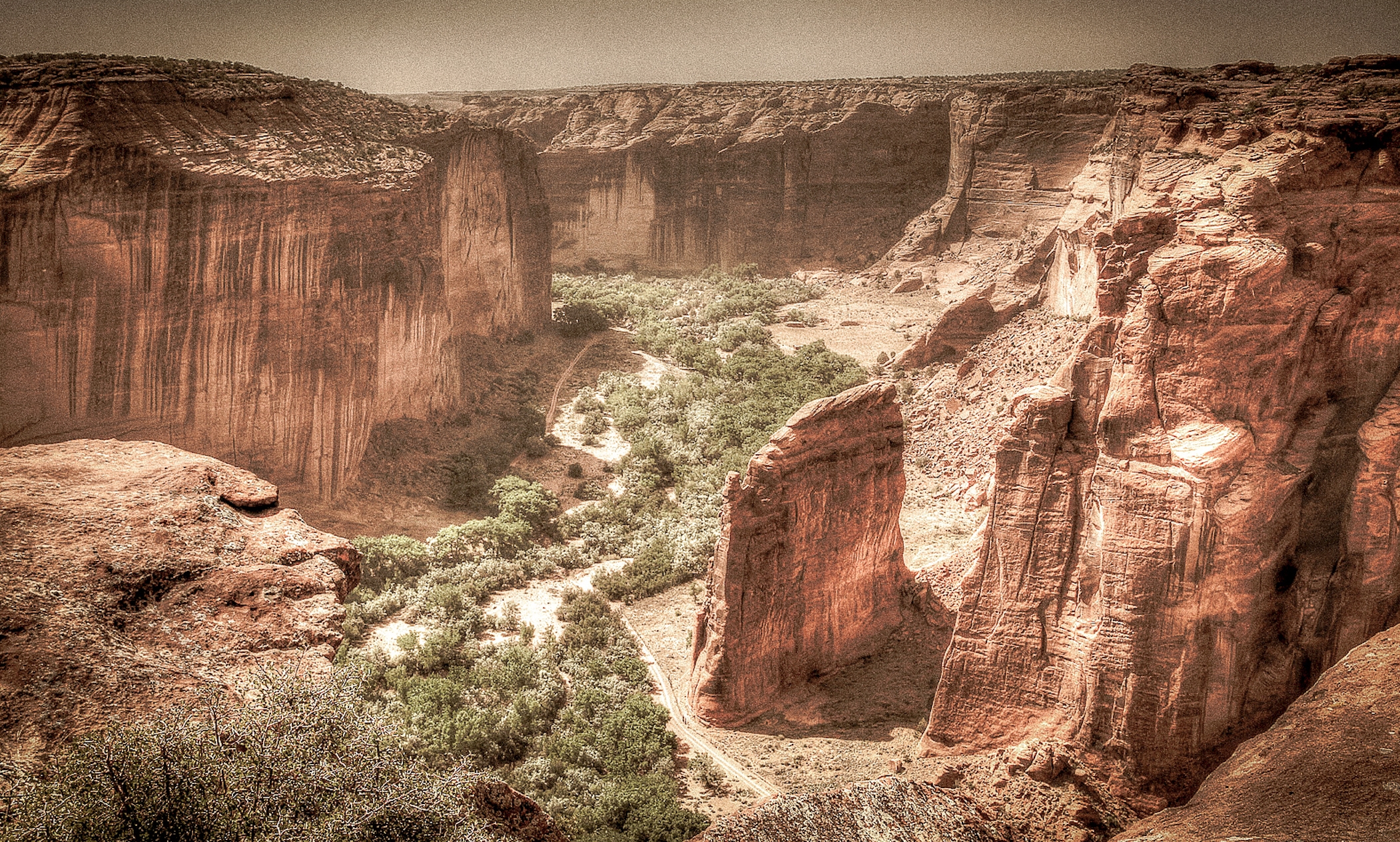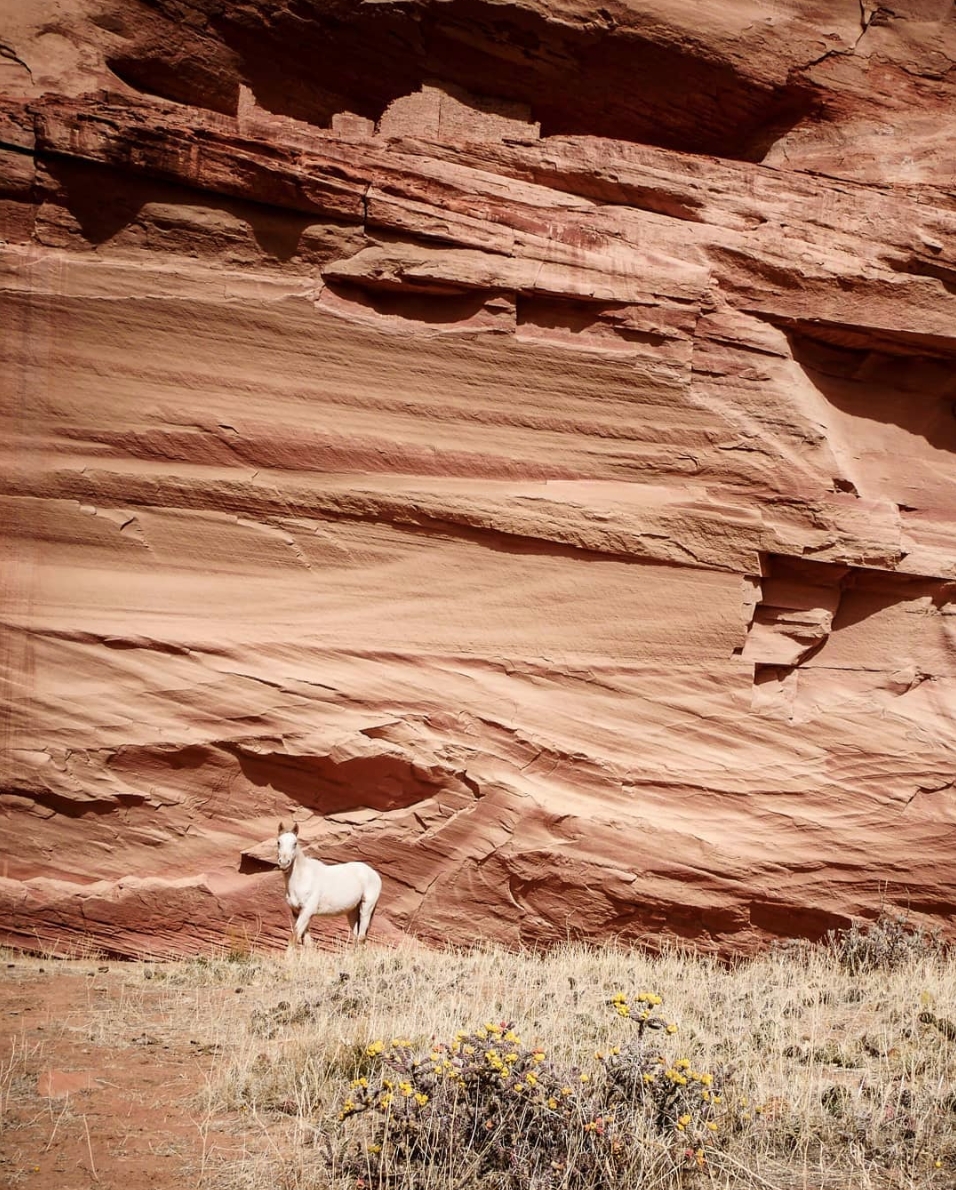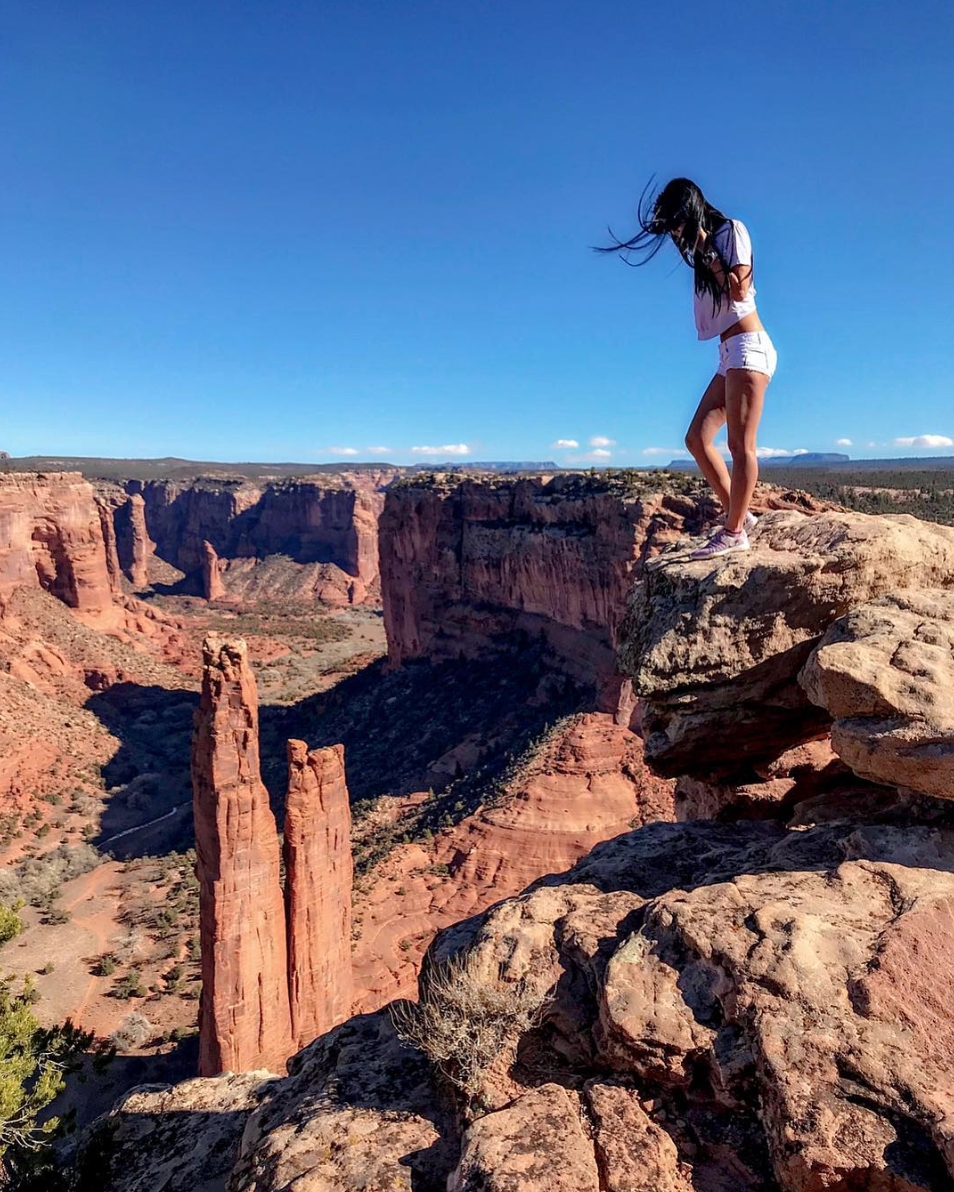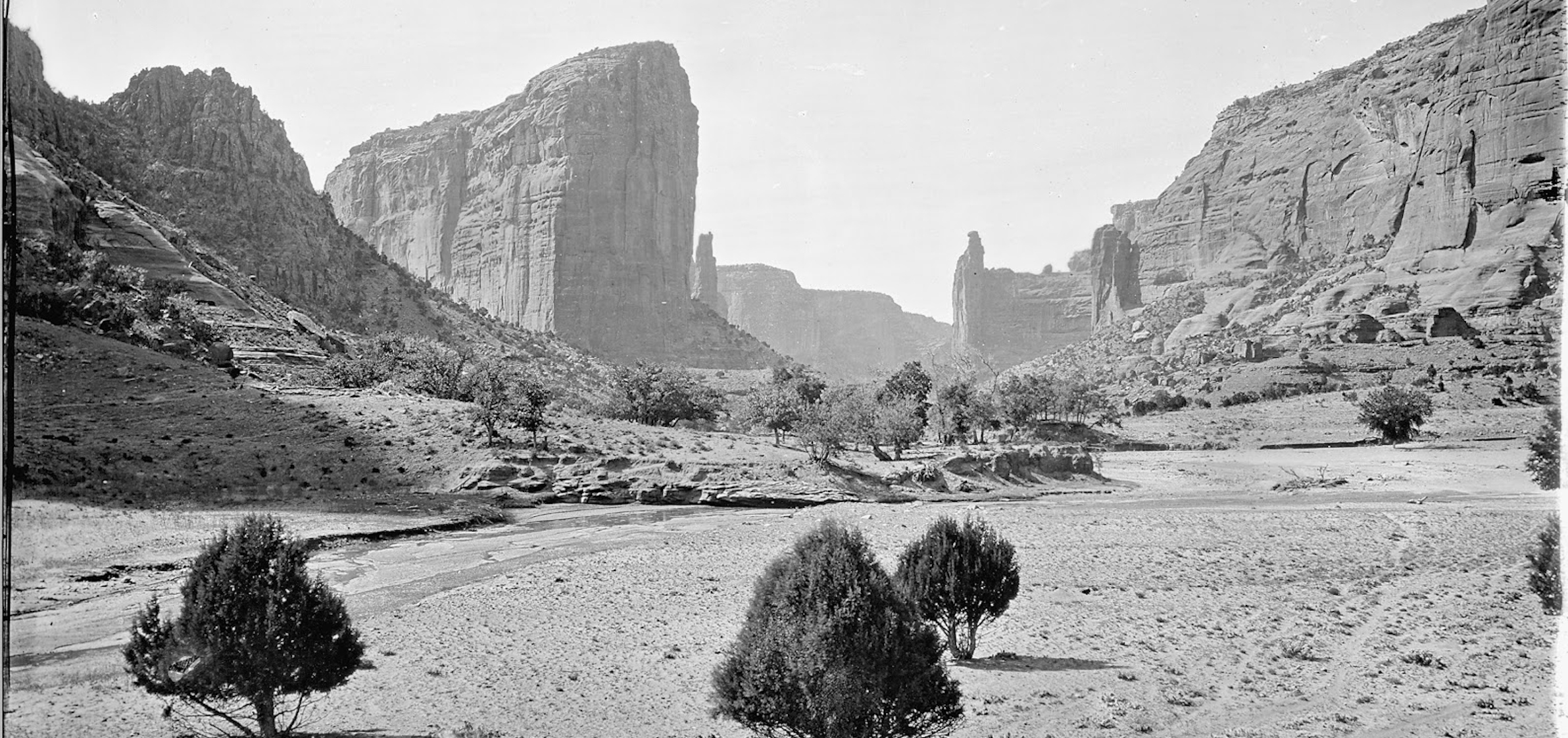
I pat my horse — named Diamond for the patch of white on the bridge of its nose — and look at my Navajo guide, James.
“How far could I ride up this canyon,” I ask, “if I had the time and money?”
James stops stroking the horse’s hindquarters for a moment to consider this. “Well… we can do three weeks easy, maybe a month. You could go longer, too. This land goes all the way up to Colorado.”
I hadn’t been expecting this answer. I’d figured James might say that a person could stay overnight in the canyon or even stretch it into a three-day experience. Not a month. Having road tripped through much of the Southwest — visiting Monument Valley, Valley of the Gods, Mexican Hat, and Havasu Falls each multiple times — I knew the region was big, but 27,000 square miles is a lot to fathom. That’s larger than West Virginia. It’s the size of Hawaii, New Jersey, and Connecticut combined.
Though I can be forgiven for misjudging Navajo Country’s size, on some level I feel like I should have expected James’s answer. Because if there’s anything that my travels have taught me about the “Four Corners” region — where Arizona, Utah, New Mexico, and Colorado meet — it’s that it should never be underestimated. It’s rich in scenery and culture, its foodway is returning, and it’s got waterfalls, hot springs, massive red rock monoliths galore. In short, it’s one of the greatest travel desinations in the United States.
Yet even for all the region’s vastness, Canyon de Chelly, near Chile, Arizona, is wholy unique. It’s a singular adventure that feels deeply tied not just to the history of this nation but the history of humanity at large. If you’re ready for your own Canyon de Chelly experience, we’re ready to get you set up:
HOW TO EXPLORE

To see Canyon de Chelly right, you need to rent a horse. The Navajo-bred ponies — many of which still roam free in the canyon — are what makes this adventure so iconic. The horses can be rented right at the mouth of the canyon, not far from Chinle, Arizona. There are a few companies that lead horseback tours, accompanied by a Navajo guide, but Justin’s Horse Ranch probably has the best claim. The entrance to the canyon is right off their corral.
Though being a serious rider isn’t mandatory, this is a great place to know your way around a horse. If you talk with your guides beforehand and make sure they match you up with a bold horse, you can gallop through the stream in the center of the canyon with Hopi cliff dwellings on either side of you. The feeling of water splashing up on your legs, the horse’s long strides, the sun shining on the green meadows, and the history that surrounds you all conspire together to create a truly rare experience.
IF YOU CAN’T RENT A HORSE: There are also guided Jeep tours and hikes led by National Park Service guides. You can even use your own 4WD, if you hire a Navajo guide to ride along with you. If you don’t feel able to get down into the canyon, driving the north and south rim is still stunning. Spider Rock — a red rock monolith — is famous as a golden hour Instagram spot (see below).
PLANNING YOUR TRIP

If you can handle heat or cold, you can visit the Canyon year round. Temps aren’t typically below freezing, though it does happen on occasion. In July and August it can hit 90 or higher — which you will definitely feel if you’re spending six or so hours on horseback. Generally speaking, the best months to visit are April and May and September and October. Traveling to the canyon during the shoulder season (between the peak and low seasons) also means fewer crowds.
If you’re hiking to The White House — a set of incredibly well-preserved Hopi ruins — from South Rim Road, you won’t need a guide. But any further explorations of the canyon require a Navajo guide. As we’ve laid out elsewhere, this is a great way to infuse the local communities with cash while seeing more of the country.
The town of Chinle, just two miles from the entrance to the Canyon, has all the infrastructure and conviencences you need. Junction Restaurant serves a sort of modified-roadside diner fare — with modern-Indigenous dishes like frybread tacos and bison chili alongside more traditional burgers and fries. The cafeteria at the Thundbird Lodge serves a similar mix of dishes, and the lodge itself is the only hotel in the canyon. It’s Indigenous-owned and a solid bet for anyone wanting to stay a night or two in a cozy bed, rather than under the stars.
A LITTLE HISTORY

While Spaghetti Westerns have a way of making the American Southwest look sunburnt and dry, Canyon de Chelly is actually a rich oasis. The creek flows year-round and life on the canyon floor is abundant. More than 5,000 years ago, the Hopi made the canyon home — growing crops; building complex structures, homes, and store rooms; and recording the passage of time with cave pantings. For many, the chance to visit Hopi ruins is the impetus for seeing the canyon in the first place.
These days, Navajo families still raise lifestock and farm in the canyon. Post-Columbus, horses became vital to canyon life. The Navajo devised a relay method of hunting — in which they would chase deer down the canyon until the met with another set of riders on fresh horses, who would continue the chase until the deer finally grew exhausted. There are paintings of this on the canyon walls.
***
I’ve been to Canyon de Chelly four times since that first ride on Diamond. I’ve galloped through the creek and stared up at the sun-baked Hopi cliff dwellings. I’ve seen the verdant meadows in spring and visited in the summer, when the sun seemed to be angry at the whole world, burning the back of my neck no matter how much sunscreen I lathered on. I’ve had guides point out the famous “Garfield rock” (it looks exactly like him), and Navajo rock art. I’ve even looked up at the starry night sky from inside the canyon. With no true city nearby, the view is astounding.
Through all these adventures, the one thing I’ve never been is bored. Because Canyon de Chelly is too rich in culture to ever get redundant and has too much stunning scenery to ever get tired of. It’s miracle of the natural world and a living history of this nation’s earliest residents. A truly American adventure that goes overlooked far too often.






